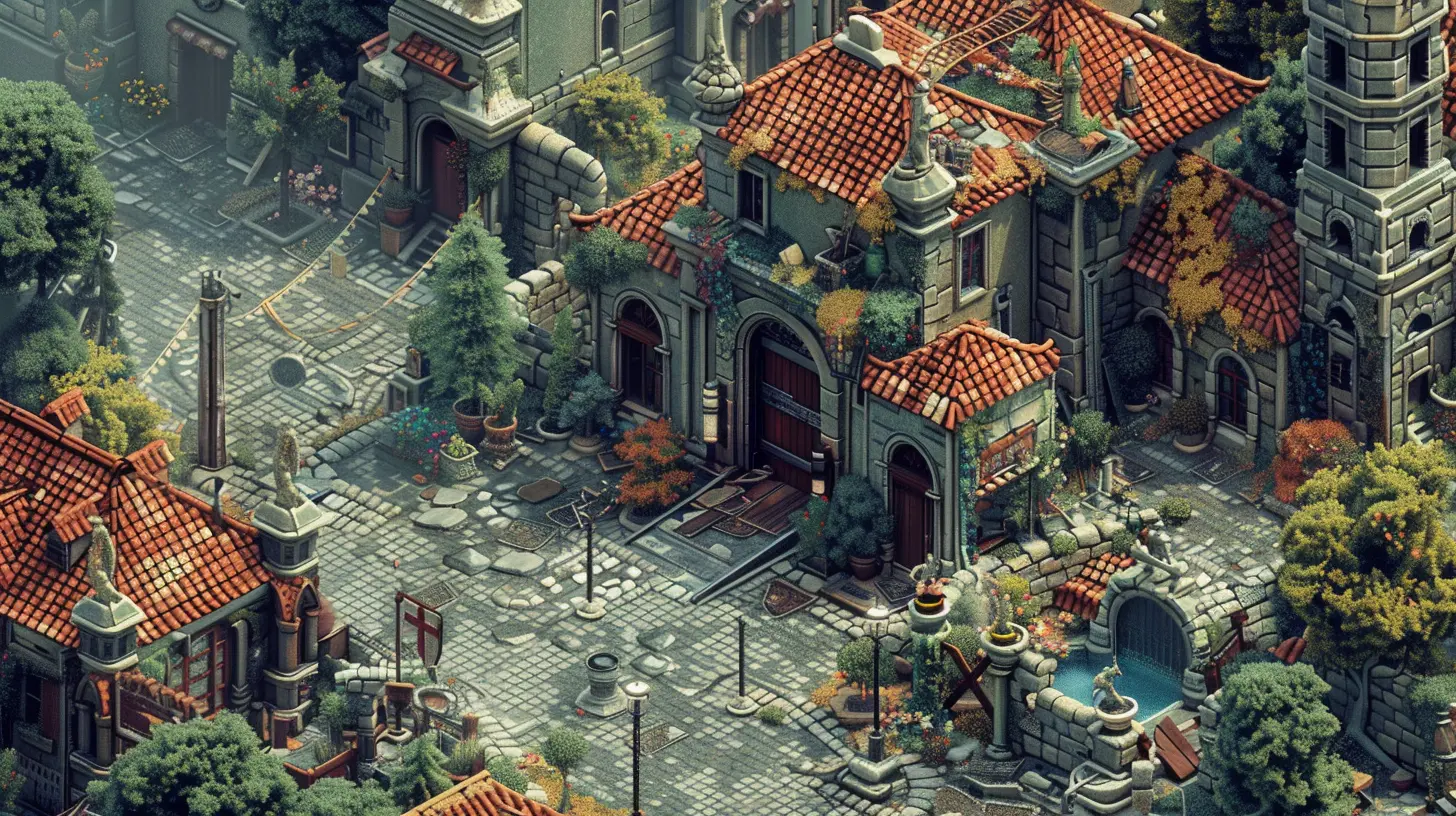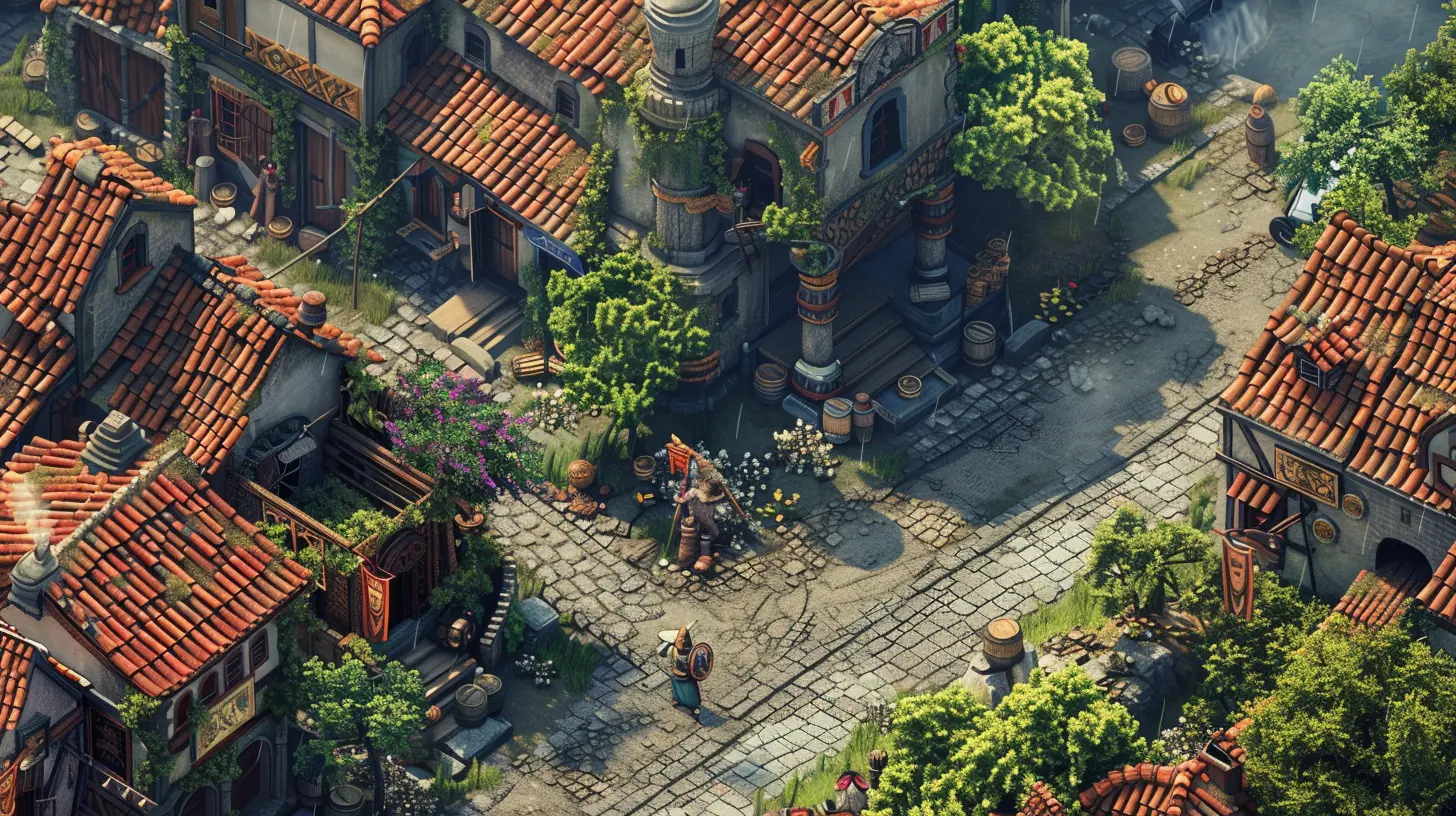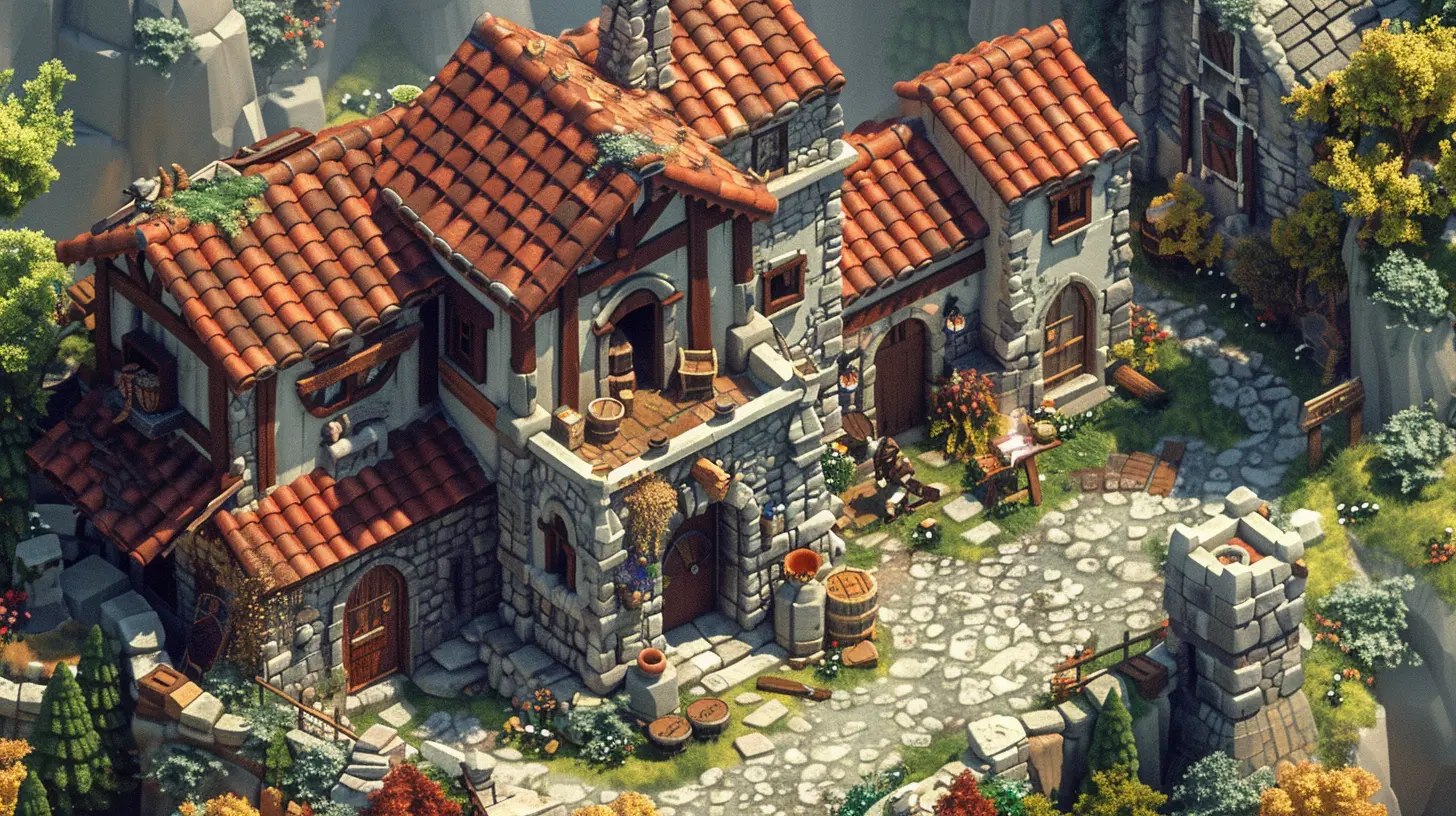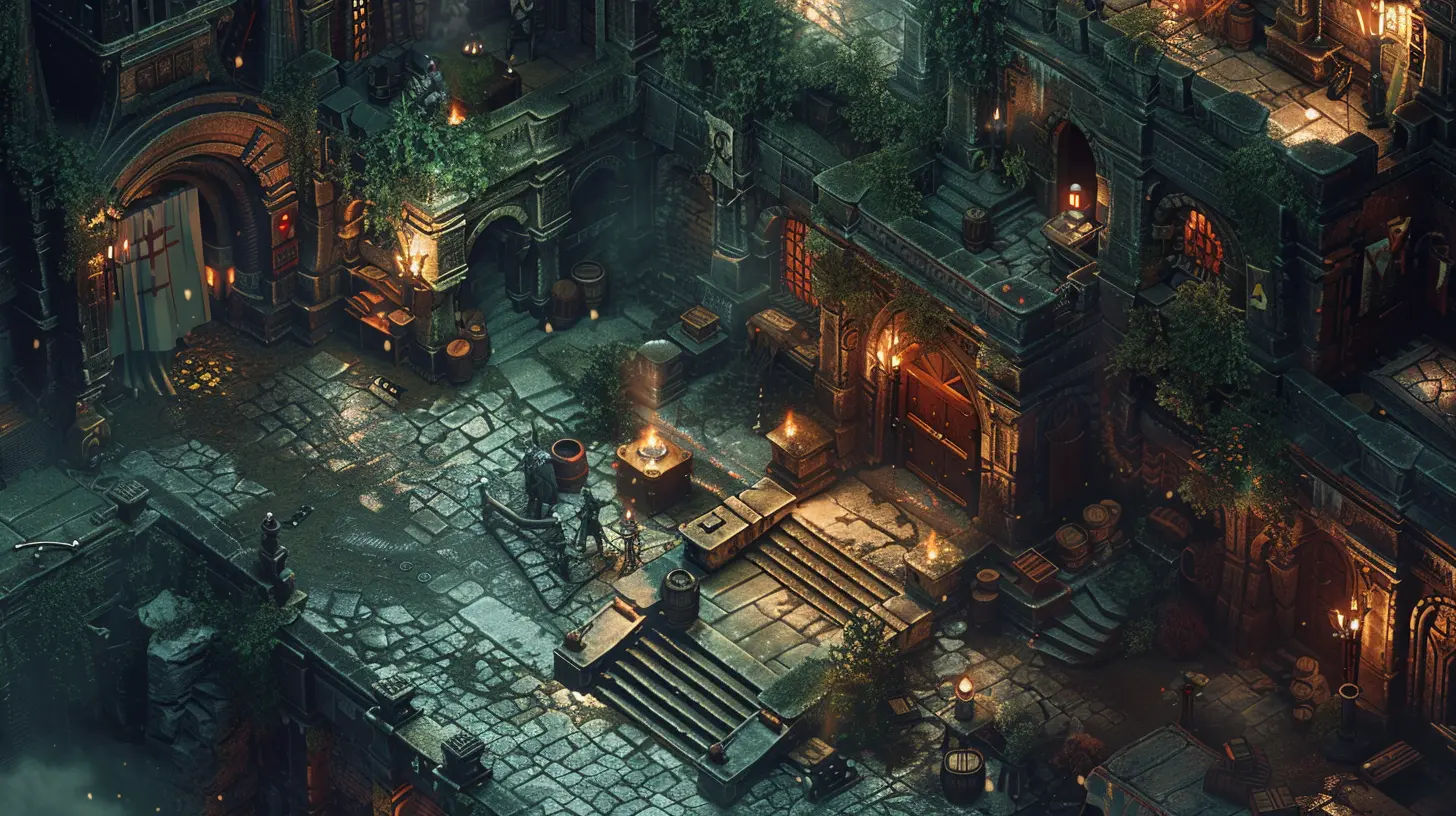Isometric RPGs: Why the Classic Top-Down Perspective Still Thrives
18 August 2025
When someone mentions an isometric RPG, what comes to mind? Baldur's Gate? Diablo? Maybe even Divinity: Original Sin? These games have a nostalgic charm that somehow refuses to fade away, even in an era dominated by photorealistic 3D graphics and open-world extravaganzas. The isometric RPG—known for its classic top-down perspective—has been around for decades, yet it continues to find an audience and thrive today. But why is that? What’s so gripping about this seemingly “old-school” format that keeps players hooked?
Let’s roll the dice and dive into why isometric RPGs are still alive and well in a gaming world that’s constantly evolving. 
What Exactly Are Isometric RPGs?
Okay, let’s back up for a second. In case you’re scratching your head wondering what "isometric" even means, here’s a quick rundown. An isometric RPG is a role-playing game that uses an isometric perspective—a bird’s eye view tilted slightly to give the illusion of 3D depth. Think of it like peeking into a dollhouse. This perspective allows you to see the environment and characters as if you’re looking from above, making it easier to navigate complex worlds.Some of the heavy hitters in the genre include "Planescape: Torment," "Fallout 1 & 2," and more recently, "Disco Elysium." The perspective has been a mainstay in gaming since the late '80s and early '90s, when technical limitations required developers to get creative with how they presented their game worlds. But here’s the kicker: even with today’s advanced technology, isometric RPGs are still killing it. 
A Nostalgic Love Affair
Let’s be honest—nostalgia is a powerful force. Many gamers grew up playing isometric RPGs, and revisiting them feels like reuniting with an old friend. It’s like slipping on that worn-out hoodie you just can’t let go of—it’s comfy, familiar, and reminds you of simpler times.Games like "Baldur’s Gate" or "Icewind Dale" weren’t just games; they were experiences. They gave players rich, intricate worlds to explore and stories that could rival the best fantasy novels. For many, these games were their first foray into deep, narrative-driven adventures. And that love hasn’t faded.
Modern isometric RPGs often tap into this nostalgia while adding modern bells and whistles. "Baldur’s Gate 3," for example, revitalizes classic mechanics with contemporary visuals and streamlined gameplay systems. It’s proof that the isometric format isn’t just surviving—it’s thriving. 
Why the Top-Down Perspective Works So Well
But nostalgia isn’t the only reason these games are sticking around. Let’s talk about practicality. The isometric perspective is actually a genius design choice, especially for RPGs, and here’s why:1. Strategic Gameplay
Isometric RPGs typically emphasize tactical gameplay. Whether it’s turn-based combat or real-time action, that bird’s eye view lets you see the battlefield and plan your moves like a chess master. You’re not just mashing buttons here; you’re thinking several moves ahead.Take "Divinity: Original Sin 2," for instance. It’s like playing a game of 4D chess. You can position your party, manipulate the environment, and calculate the exact percentage chance of your arrow actually hitting its mark (which, let’s be real, still misses half the time).
2. Immersive Worldbuilding
There’s something about the isometric perspective that makes exploring game worlds feel… cozy. It’s intimate. You’re not just running through wide-open spaces but instead navigating intricate maps filled with detail. Every nook and cranny could hide a treasure chest, a deadly trap, or a quirky NPC with a side quest.Remember in "Diablo" when you uncovered those creepy dungeons teeming with skeletons? Or in "Pathfinder: Wrath of the Righteous," where you stumbled upon a morally gray choice that made you rethink your entire character build? That’s the magic of isometric design—it pulls you into the world in a way few other perspectives can.
3. Accessibility and Clarity
Let’s face it—some 3D games can feel overwhelming with their sprawling open worlds and endless HUD elements. Isometric RPGs, on the other hand, offer clarity. The fixed camera angle ensures you can focus on the gameplay without constantly fiddling with your view. It’s simple and effective.
Storytelling That Hits Differently
Isometric RPGs have always been in a league of their own when it comes to storytelling. Maybe it’s because the camera distance gives the narrative more room to breathe. Or maybe it’s because developers tend to pour their souls into these games, knowing they attract players who crave depth and complexity.Games like "Disco Elysium" are perfect examples. This masterpiece doesn’t shove high-octane action in your face. Instead, it offers a deeply personal story about politics, identity, and existential dread. And guess what? It works. The top-down view reinforces the idea that you’re stepping into your character’s shoes, giving you a sense of ownership over their choices and actions.
The Indie Scene’s Playground
Another reason isometric RPGs are thriving is thanks to indie developers. While AAA studios are busy chasing the next big photorealistic blockbuster, indie devs are diving headfirst into the isometric niche.The appeal? These games are budget-friendly to develop compared to massive 3D projects. Plus, they cater to a dedicated audience that values storytelling and gameplay over flashy graphics. Games like "Pillars of Eternity" and "Wasteland 3" prove that you don’t need a billion-dollar budget to create something truly epic.
Indie isometric RPGs are also more experimental. They play around with themes and mechanics that you won’t often see in mainstream titles. Think about "Undungeon" or "Encased"—these games push boundaries while staying rooted in what makes the genre so beloved.
Modern Tech Meets Old-School Charm
One thing that’s helping isometric RPGs stay fresh is how they blend old-school charm with modern technology. Developers have found ways to enhance these games while staying true to their roots.For instance, dynamic lighting, detailed textures, and advanced physics have made isometric RPGs visually stunning. Even the stories and character interactions are more nuanced, thanks to innovations in AI and branching dialogue systems.
And don’t get me started on modding. Many isometric RPGs have thriving modding communities that keep the games alive long after their initial release. Want to tweak your combat system? Add a brand-new questline? There’s probably a mod for that.
The Future of Isometric RPGs
So, where do isometric RPGs go from here? Honestly, the sky’s the limit. With more developers embracing the genre and fans eagerly diving into each new release, it’s clear that isometric RPGs aren’t going anywhere anytime soon.Games like "Baldur’s Gate 3" and "Pathfinder" are carrying the torch, while indie gems continue to surprise us with innovative takes on the classic formula. The genre’s future is bright, and as long as there’s a demand for rich storytelling and tactical gameplay, isometric RPGs will keep thriving.
Sure, the gaming landscape will keep changing. But one thing’s for sure—the top-down perspective isn’t just a relic of the past. It’s a testament to the idea that great gameplay and storytelling will always stand the test of time.
Final Thoughts
Isometric RPGs are like a fine wine—they get better with age. They’ve proven time and again that you don’t need flashy visuals or massive budgets to create something truly special. At their core, these games are about immersion, strategy, and storytelling—the stuff that keeps us gaming into the wee hours of the morning.So, next time someone asks why you’re still playing these “old-school” games, just smile and hand them a copy of "Divinity: Original Sin 2." Let the magic speak for itself.
all images in this post were generated using AI tools
Category:
Role Playing GamesAuthor:

Emery Larsen
Discussion
rate this article
2 comments
Megan McClain
Isometric RPGs reign supreme—timeless gameplay never gets old!
December 30, 2025 at 3:46 AM
Solaria Strickland
Isometric RPGs captivate with nostalgia, blending strategic gameplay and rich storytelling, proving their enduring appeal in a 3D-dominated market.
August 24, 2025 at 4:19 AM

Emery Larsen
Absolutely! Isometric RPGs evoke nostalgia while offering deep strategy and storytelling, ensuring their place even in a 3D world.


